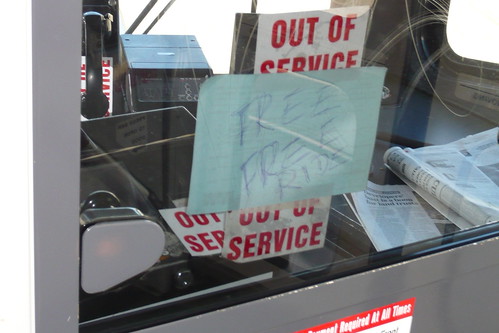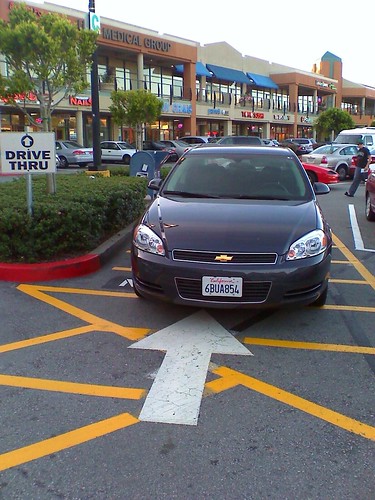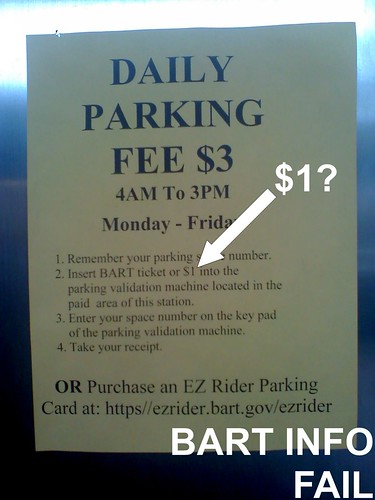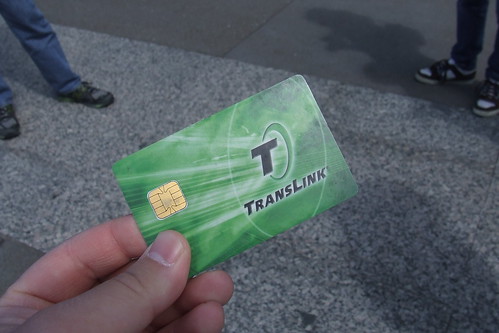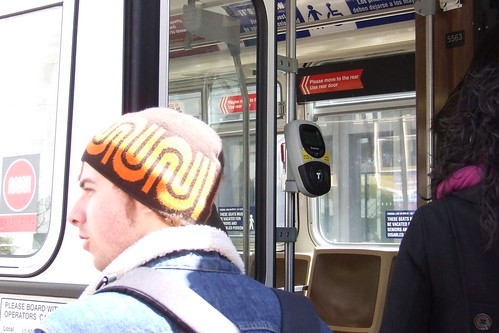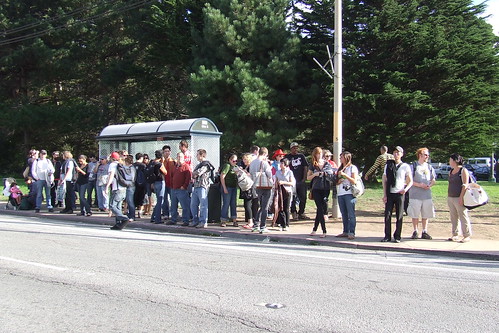
Contrary to popular belief in a Bay Citizen/NY Times Local article, there's a lot of people who are not having problems with their Clipper card on public transit.
Everyone knows that if 99%+ is having no problems, there's always that 1% or less that will have problems, and some of that group will whine and scream like uncontrollable children that poisons the huge majority experiencing no or very minor issues (e.g. self service bill feeder not functioning) and that the problems are worse than it should be.
From reading the Bay Citizen article, I feel it's one sided and only targets certain isolated incidents. In the beginning of the article, it mentions about a single BART gate that would read the card, but the gates wouldn't open for people. That's just an isolated incident because it doesn't happen anywhere else on the BART system based on my own experience, it's likely a malfunctioning gate that refuses to open.
There's other things I want to dispute about the article:
There's a mention that there was 38,000 calls to the "customer service hotline" during the month of August. Well, does that mean 38,000 calls to speaking to a customer service agent, or does that also include calls for people using the automated system to find out their card's balance? Let's also remember that there's been a huge campaign push by Muni and AC Transit to get students on Clipper cards due to a mandatory switch from paper passes to Clipper cards, and parents wants to call to find out how do to it; students during August went back to school and the need to get their specialized Clipper card to get to school. When Caltrain switched to Clipper only, they had a high number of calls to customer service, but that has died down as people understood how it worked and investment in a PR campaign at Caltrain stations, even though the use of monthly passes and 8-rides is stirred with complexity.
500K transactions daily: Author points out it is not 500K passengers. No shit, Sherlock. "Transactions" means how many Clipper cards was scanned in one day. If you asked Clipper how many passes was sold, they'd be able to give you a rough number of regular passengers using transit on a normal weekday (not including e-cash passengers). If you know that around 35% of BART passengers uses Clipper, do some math: Ask BART how many passengers on a weekday, and use a calculator. Also, since nearly all Golden Gate passengers uses Clipper due to the automatic discount for all card users, that wouldn't be so bad to find the round figure.
Caltrain is mentioned about when there's an incident holding up passengers on the trains, but noting that passengers have four hours and can't tag-off in time is just isolated incidents that can be resolved by just asking for a proper credit from Clipper. Clipper had to set a four hour limit from the tag-in at a Caltrain reader, which is FAIR for a passenger to complete a one way journey.
There's a mention about Muni's alleged electrical irregularities causing Clipper readers to crash. The author says it happens "regularly," but I don't see it that often happening, and especially that Clipper readers also have a backup battery for power problems or bus engine shut downs. I live near a major bus line terminus where drivers are required to shut down their gas engine, but the Clipper readers run normally without depending on the engine. Muni had common problems in the past with the historic streetcar fleet as the electricity was sometimes inadequate (ever seen the lightbulbs flash when crossing a wire junction?), but was able to resolve it with a software update. It's very RARE for the readers to fail for that particular reason. Muni rules state if a reader is broken, operators are required to report it immediately and rides are free (equivalent to a broken cash fare box).
Is there any proof that Clipper cards are to blame for the drop in on-time service for Muni? A different cause could be a change in ridership due to the rising gas prices and with the economy tanking, and students returning to school. It could also be the upset Muni operator's union who had their ass kicked by Proposition G by pissing off the public by unofficially slowing the system down.
Lastly, some passenger accuses Clipper for losing $80 for a card that "failed to work." Okay, so, what's the full story on that and why is it failing? Just saying you can't resolve the lost $80 doesn't mean there's something Clipper is always to blame.
I will mention one thing that most would agree upon:
If you have the option to not use Clipper's Autoload program, DON'T USE THE PROGRAM. The biggest complaints I hear is their credit card is rejected and blocked; sometimes on a weekly basis. I don't know what to say is the cause of all the rejections, but the easiest way to avoid this is to not link your credit card to your Clipper account. Just spend five to ten minutes every week or two and load Clipper e-cash or buy your passes at an in-person vendor, self service machine, or a transit agency's ticket sales booth. I never had my Clipper card blocked because I don't use Autoload; I remind myself on a monthly basis to visit a Walgreens or drop by a metro station to buy my monthly Muni pass. Read more about why I don't recommend Autoload.
Finally...
On a final note, why isn't Clipper or the MTC doing some better PR? They rarely put out press releases or talk to the public while other agencies like SFMTA/Muni has full-time staff dedicated to giving information to the general public and the press.
I enjoy blogging about Clipper as a hobby to the point where people trust me for info and advice more than Clipper itself. The Bay Citizen should have interviewed me for a perspective, but my bets are the author wanted to make it an anti Clipper article and not take the opinions and views of someone who knows the program better and writes more about it than any blog or newspaper in the Bay Area.





